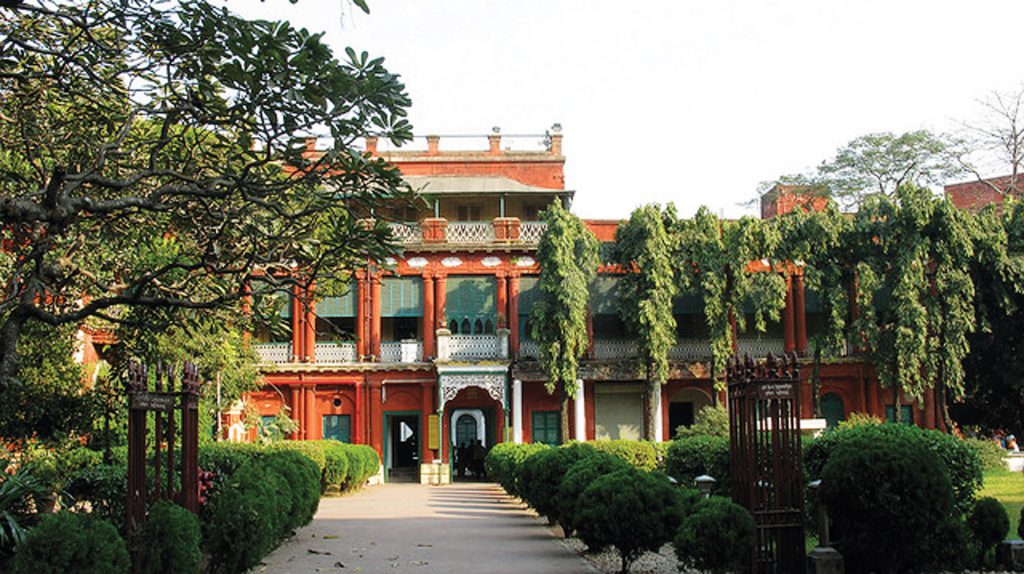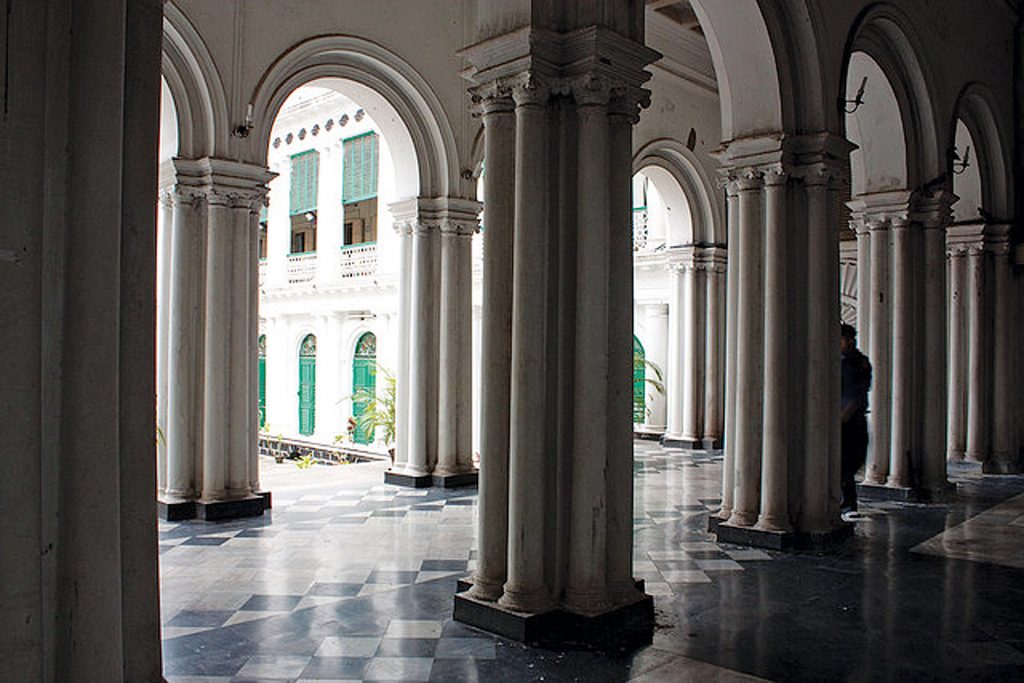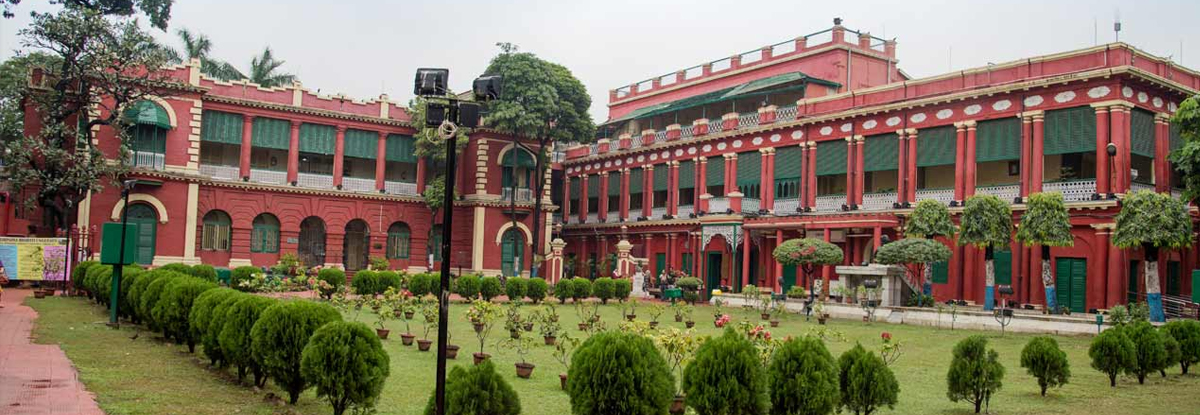Jorasanko
The famous Tagore residence

Located in the midst of a congested and busy north Kolkata thoroughfare, JorasankoThakurbari has earned a unique place in the cultural history of Bengal. In 1784, Nilmoni Thakur shifted the family home from his Pathuriaghata residence and established this house at Jorasanko. The name ʻʼJorasankoʼ originated from twin Shiva temple which situated nearby. Over the next two centuries three stalwarts of this family ‒ Prince Dwarkanath Tagore, Maharshi Debendranath Tagore and Gurudev Rabindranath Tagore ‒ of three successive generations provided great leadership in the social and cultural life of this country. They added a golden chapter to the history of modern India. This was the residence that first saw women come out of purdah and go to study in schools and colleges. And this is the house where Jnanadanandini Debi gave Bengali women the contemporary style of wearing the sari.

A leisurely walk down the spacious verandahs transports you to the time when the home hummed with creative activity of the highest order and gave Bengali culture a fresh, new direction. Rabindranath, the Nobel Laureate, was born here on May 9th in 1861 and it was here that he breathed his last in 1941.

Jorasankoʼs traditional architecture is reminiscent of 18th century Bengali residences of Calcutta. The main gate opens into a lovely courtyard dotted with trees. The facade of the house looks beautiful in red and green hues. The thakurdalaan situated in the inner quadrangle of the house is picturesque and deserves a special mention. It is here that most of the religious ceremonies and gatherings of the Tagores would take place. Today students of the Rabindra Bharati University often use the thakurdalaan to stage musical performances and other cultural programmes.

